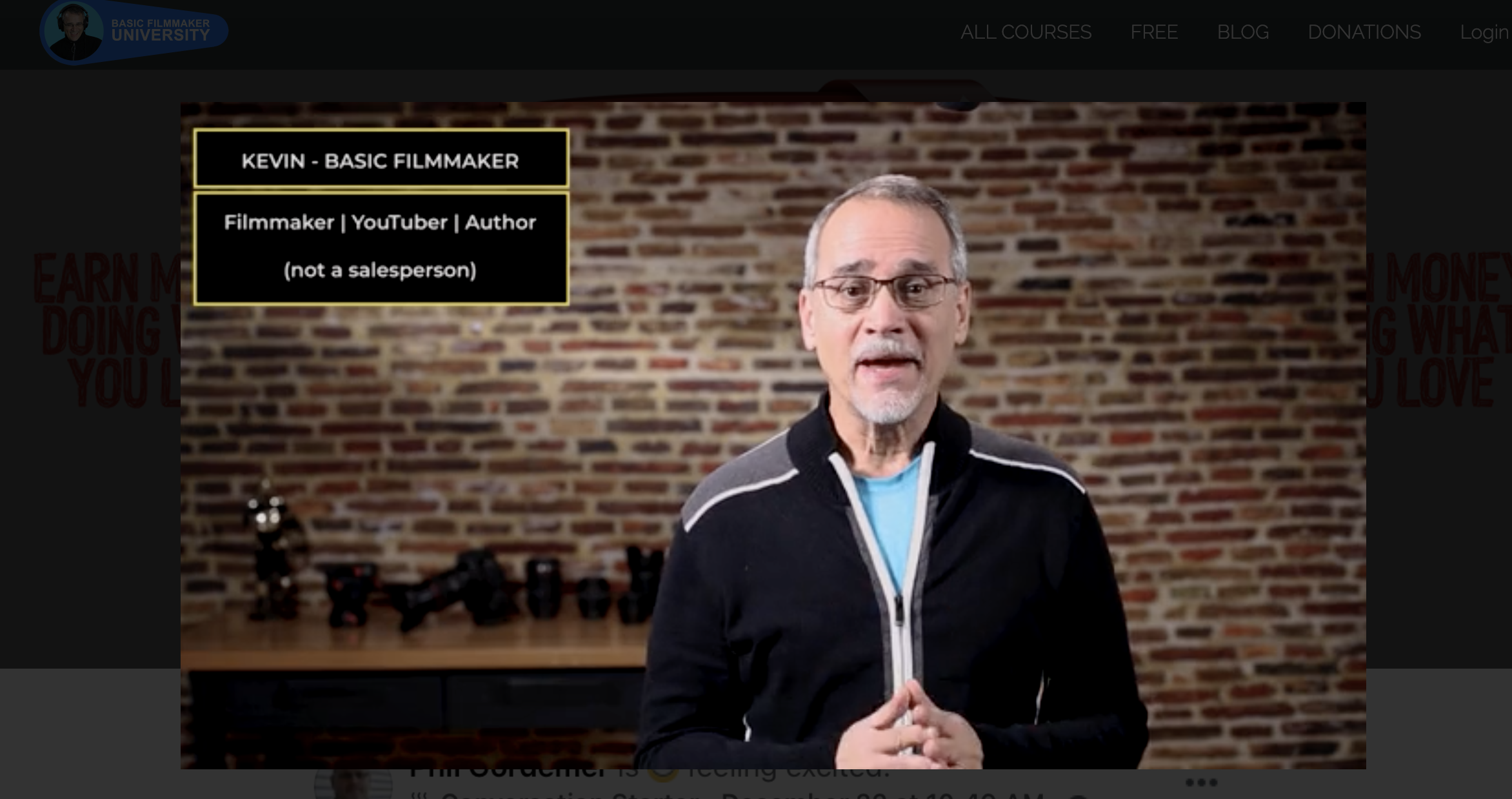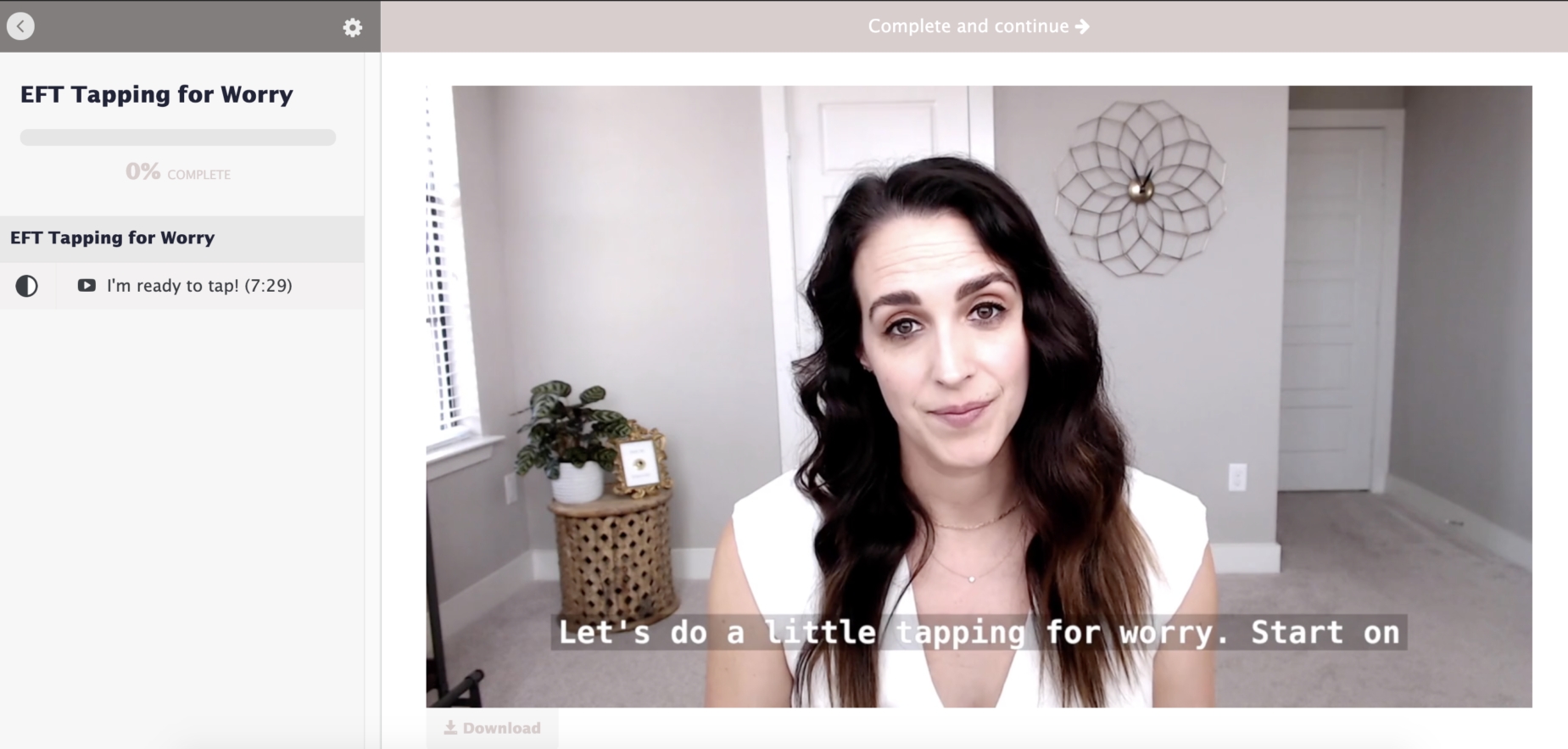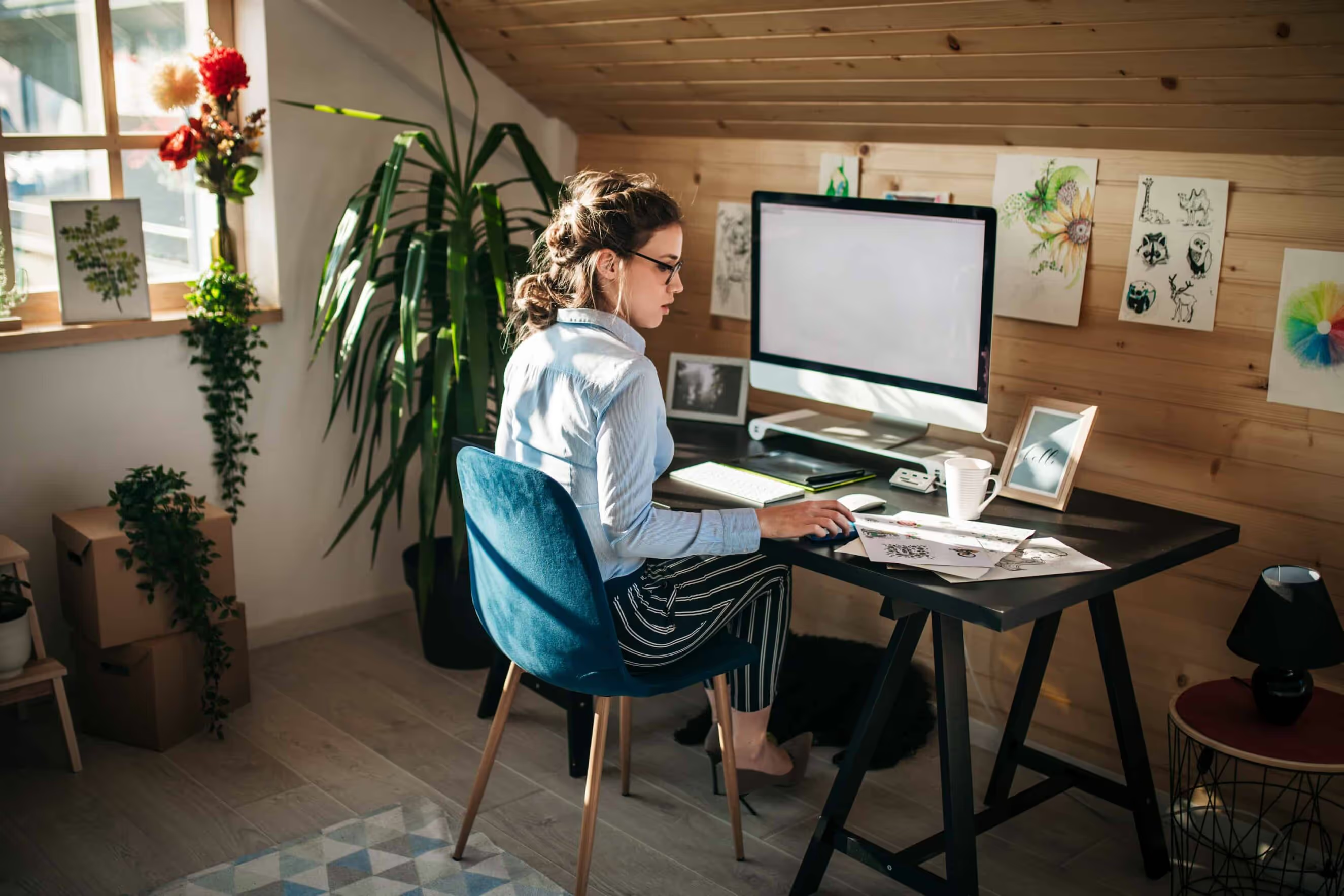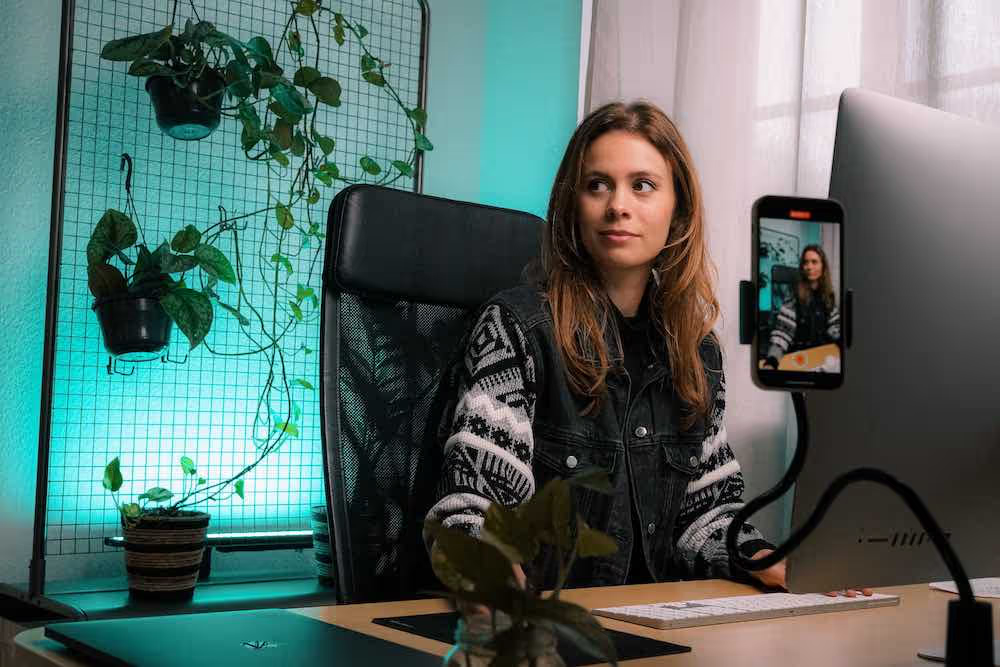Video stimulates auditory and visual needs in viewers, making it more easily digestible than other mediums such as photos or writing alone. And, more than 80% of video creators have stated that videos have not only increased traffic on their sites but have also directly increased sales and leads on their products and services. In other words, ROI on video content is high and steadily growing. We want to help you record better video at home.
Contrary to belief, you don’t have to call upon a pro when creating stellar video content for your online course. All you need is the drive to get it done and the know-how to record video content at home that will continue to maximize and grow your business. Explore tried and true ways to record professional-looking videos from home.
Skip the uncertain—plan before you record
Have you ever been watching video content and asked yourself, how did they create this high quality video? Chances are your favorite creator started with a clear plan before shooting.
When creating video content, whether it be for your online course, social media, or YouTube, you want to keep in mind your audience and what value they’re getting from your content. By writing a script (or even just an outline of talking points), you’re able to get inside the head of your viewers and create a video that answers their burning questions.

Questions to ask before you hit record
- What are the key points viewers should gather from watching your video? (This is especially important if you’re recording a video for one of your course modules.)
- What’s the most digestible way to break up each point in the video?
- What space in my home will I use to shoot? Can it be set up ahead of shooting? (more on that later)
- What’s the best time of day to shoot? (i.e., weekend mornings when the kids are asleep)
Depending on your comfort level in the video content creation realm, you may want to write out a full script and pair it with a storyboard. Going into recording and video production with an ending or ultimate video goal in mind will ensure you capture content that not only grasps your audience’s attention but also is valuable and useful.
Embrace your space
It’s human nature to analyze everything you see, especially when watching videos. A distracting background in your course video could easily take attention away from you and put it on something that has nothing to do with the message you wish to get across. When choosing the right place to shoot, these three main options won’t steer you wrong:
- Lifestyle: If you’re one of the lucky ones with a home office or you just possess impeccable decorating skills, don’t be afraid to show them off (as long as they don’t take the attention from you and your material, of course).
- Backdrop: If you don’t have a distraction-free space in your home to record, create one with a backdrop. You can buy one or use old wrinkle-free fabric that you may have at home.
- A blank wall: When all else fails, a bare wall (preferably white) always gets the job done.

Consider your presence
Not everyone is comfortable on camera. However with practice, you’ll be able to perfect your camera presence overtime. When you’re uncomfortable on camera, it’s noticeable. Though camera presence may seem like a small detail when compared to the attention and time spent on the actual content you’re delivering on screen, it’s still important to consider when engaging with an audience, especially in a home video for your online course.
The matter of posture
The first step to appearing more confident and credible on camera is nailing good posture. Confidently sitting up straight and speaking to the camera makes your viewers feel like you’re speaking directly to them from a place of authority and that what you have to say is valuable.
Project away
Say every word like you mean it. While you don’t have to yell to get your point across, you want to make sure that your audience can clearly understand all the important information you’re delivering in your video. Projecting your voice exhibits confidence on camera and is non-negotiable to recording good video content.
Dress the part
We understand the temptation to reach for casual attire, but dressing the part can help boost your own confidence on camera and it shows your viewers you’re taking yourself and your content seriously.
Be passionate
When you’re passionate about the subject you’re speaking about, it’s evident. It encourages others to be just as enthusiastic, which for you means more captivated viewers that can’t wait to see what video content you put out next—or in the case of video content for your students, what more high value content you offer in your online course.

The beauty in natural light (and other alternatives that will do)
Have you ever stepped into the sun to take a photo and it’s turned out like a professional portrait? That’s a testament to just how important good lighting is when taking pictures and—you guessed it—recording video content at home. Natural light from the sun trumps all, but if you’re unable to get good natural light indoors, you have other beginner-friendly options to sort through.
- Ring Light: A circular direct light that usually leaves a light circular ring in your pupils. Typically, your camera sits in the middle of the ring light while you record.
- Soft Box Light: Offers controlled, diffused light that is similar to sunlight coming through a window.
- LED: Highly recommended for video. Typically takes up minimal space, which is great depending on the area you’ve declared your at-home studio.
Start small but invest in the stress-free
When you’re starting out recording video content for your business or online course, it’s essential to start small and cut unnecessary costs. However, a few tools can make recording video at home somewhat of a seamless process.
- Extra battery—if you’re not recording on a smartphone
- Tripod—for sturdy footage, especially when recording subjects other than yourself
- Camera remote—to stop and start recording without fidgeting with your camera
- External mic—for superb audio quality
Getting smart with your phone
Recording content on your phone? Set optimal settings for capturing video.
You’d be surprised how many of your favorite content creators record on their smartphones or use their phone’s camera and a camera app even when they have pro cameras at their disposal. The trick is to go into your settings and switch over to anything that will make your videos clean. This includes, upping the filming quality to HD and tweaking the FPS to something optimal (between 24-30fps).
As a rule of thumb, you should use your back camera when recording video (as it’s usually much higher quality than that front selfie camera). Also, don’t forget to record in landscape unless you’re uploading to a platform that works best with vertical videos. (Of course, if you’re ready to upgrade your camera, we can help with that, too.)
Always do a test shot
There’s nothing worse than getting excited to record top-notch video content just to realize something was off—after you’ve already finished recorded. Before stepping into recording, do a test shot (or two for good measure) to double check lighting, video clarity, audio quality, and the like.
Additionally, allow yourself to take breaks to make sure nothing unexpected has occurred while recording—like your memory filling up or your camera shutting off.
We believe in good content shouldn’t get bogged down with complicated tech know-how or jargon. Simply, tweaking a few things can help you learn how to shoot and record better video at home without adding more work or breaking your business’s budget.
{{firstdigital-component="/blog-shortcodes/blog-popup"}}
Join more than 150,000 creators who use Teachable to make a real impact and earn a real income.







